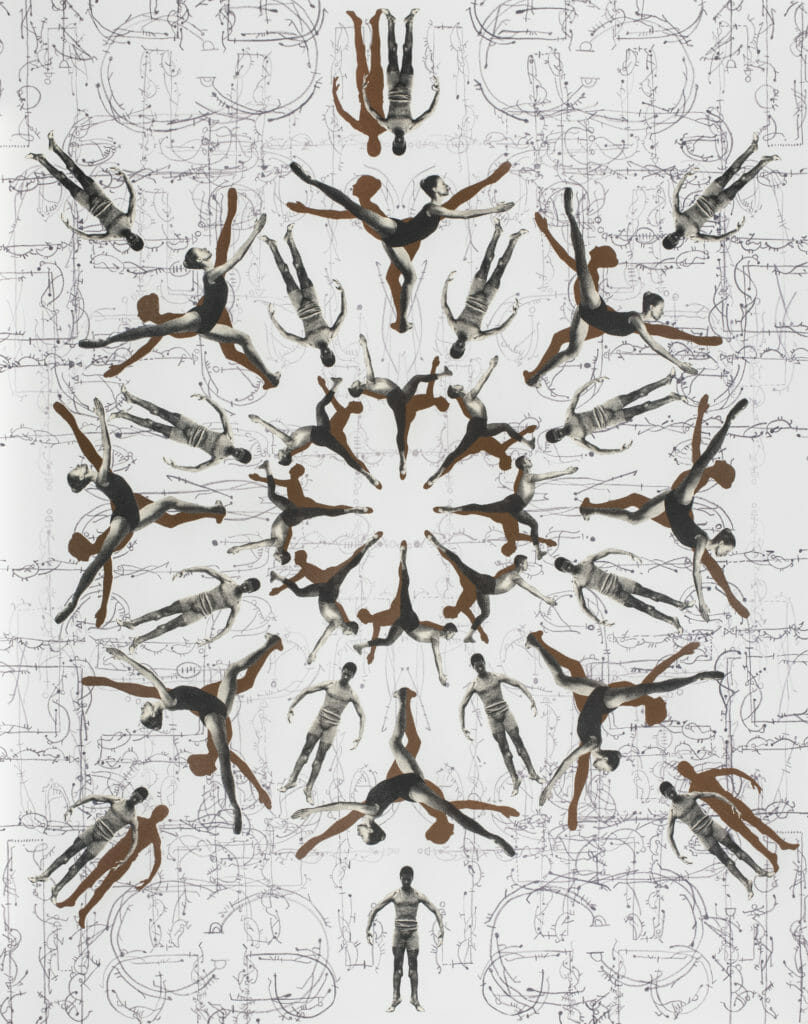
Art Gallery of Nova Scotia opens two new exhibitions
Lithography prints and Althea Thauberger’s career retrospective
In 1970, Joyce Wieland kissed a stone in Halifax. Well, not a kiss, exactly. The artist mouthed the words to “O, Canada,” imprinting bright red lipstick onto stone.
Wieland was creating a lithographic print, a style of printmaking where artists use grease and water to repel ink into designs and textures which are rolled onto paper.
She, along with many other Canadian artists, produced lithography prints during NSCAD’s Lithography Workshop which ran from 1969 to 1970.
Now, 50 years later, the Art Gallery of Nova Scotia (AGNS) is unveiling the results of a new workshop in a show called NSCAD Lithography Workshop: Contemporary Editions, which opened Nov. 9 in downtown Halifax.
“A diversity of voices”
While the contemporary artists used the same techniques as the original workshop did 50 years ago, the show not only honours the legacy of the influential workshop but crafts a new one as well.
“Each of these works feel heavy, but fulfilling to have this work at the gallery,” says AGNS Chief Curator Sarah Fillmore. “Especially a diversity of voices and a diversity of backgrounds added to that primarily male, white canon of artists who were cemented 50 years ago.”
The AGNS was awarded a New Chapter initiative grant from the Canada Council for the Arts in 2017. With those funds, they brought in Master Printer Jill Graham from NSCAD to help each artist craft their own print. Eight artists were invited to participate: Ed Pien, Amy Malbeuf, Derek Sullivan, Shary Boyle, Brendan Fernandes, Shuvinai Ashoona, Jordan Bennett and Ericka Walker.
“Only one of these artists is a print-maker and everyone else has a very different approach to art-making,” says Melanie Colosimo, curator of the exhibition. “To see that reflected in this work can be very engaging to the public.”

In Pose
As multi-disciplinary artist Brenden Fernades speaks about his print, In Pose, his eyes scan the bodies in his piece, each in ballet pose, rotating upon the white background in circles. He speaks while standing in pose himself – fourth position.
“The body is a space of question, a space of agency,” Fernandes says, “a space where we’re still seeking our freedoms and finding our agency. This print embodies that for me.”
Fernandes’ work explores themes of cultural displacement, migration, labour and queer identity, often taking cues from his extensive experience in dance. In Pose takes all those themes into account through the lens of tragedy.
To Fernandes, the kaleidoscopic view of dancers in his piece speaks to the Orlando Pulse nightclub shooting in 2016.
“49 people – queers, people of colour – died. They fell to the ground. I started thinking about that metaphor, of falling and standing up, of being empowered.”
The homage to the victims takes shape through Fernandes’ work, which also honours the work of seminal American filmmaker Busby Berkeley. His films often had similar kaleidoscopic patterns.
Fernandes says the act of lithography has been a way for him and his colleagues to consider the issues at the heart of their solidarity.
“We’re living in precarious times but we’re thinking we need to find social solidarity. We need to find our freedoms, and this show brings eight artists together who are thinking through these questions.”
Expanding and continuing the legacy
This show doesn’t just seek to bring in a variety of viewpoints. It also encourages cultural exchange between communities within Canada, such as between Cape Dorset and Nova Scotia.
Shuvinai Ashoona, an Inuit artist from Cape Dorset, Nunavut who specializes in drawing, was drawn to the landscape of Peggy’s Cove as she was searching for inspiration for her print. The artist’s ensuing creation transports viewers there as she imagines herself as part of the rock and sea, as one with nature.
The Anna Leonowens Gallery is also selling limited edition prints in hopes of revitalising the workshop for the long-term.
“The sales of the work will help continue the project beyond 2019,” says Colosimo, “so we can continue to invite artists to collaborate at NSCAD on prints or books or develop the work beyond lithography.”
All eight prints are on display at the AGNS, and the artists will be the subjects of a CBC docu-series called Print’s Not Dead, which will be available on CBC Gem.
The State of the Situation
Althea Thauberger stands in front of 12 soldiers – all armed, all women. They run towards her in military fatigues, Afghanistan’s sun glancing off the airport tarmac behind them, their smiles at odds with the M-16s and handguns they clasp.
British Columbia-based artist Thauberger was there. She ate with those soldiers, learning their names and hearing their stories. But now she’s over 10,000 kilometers away, observing her photographic composition from the basement gallery of the AGNS.
Althea Thauberger: The State of the Situation is a new, three-venue exhibition that spans a decade of Thauberger’s artistic career.
The exhibition displays five works by Thauberger’s including a photographic series that shows her inhabiting the role of a colonial bookkeeper, an exploration of a cinema in Pakistan and that composite photograph of 12 Canadian Armed Forces soldiers.
Exploring settler-colonial “Canadian-ness”
In her work, Thauberger explores the relationship between rulers, society and the individual, often with an eye for those subjugated by the state.
Thauberger says the 2002 British Columbia Indigenous treaty referendum sparked a change in the direction of her work in the ensuing decade.
“I started thinking about my own positionality within the Canadian colonial state,” says Thauberger. “That was when my own awareness started, thinking about the individual’s roles within that.”
One of Thauberger’s artworks currently on display at AGNS is from a previous exhibition of hers, The Trouble with Occupying others. In the piece, Thauberger plays the role of former National Film Board executive producer Lorraine Monk. With pearl earrings and a subtle air of mischief, Thauberger’s self-portraits document Monk’s role in the gathering of still images for Montreal’s 1967 International and Universal Exposition (aka Expo 67).
“The piece looks at that project as a forceful formulation of picturing Canadian-ness,” says Thauberger. She examines Monk’s project with a critical eye, especially in its capacity to reinforce the white, settler-centric image of Canada.
Thauberger’s relationship to Monk is deeper than photographic impersonation. As she delved into Monk’s life, she discovered Monk’s name was Althea as well. They both have or had control over the perceptions of others – Monk through perceptions of Canadian identity, Thauberger through video and photos of communities around the world. Both created work that has the capacity to change narratives.
Curator Sarah Fillmore says the wide scope of Thauberger’s work means the themes are accessible for anyone.
“Althea allows us to see a lot of communities which are self-reflections,” says Fillmore.
While Thauberger’s art spans borders and identities, Fillmore says it’s ultimately about experiences that unite us.
“Halifax is a global city,” Fillmore says. “It’s a place where many different people are looking at themselves, and the show really allows you to connect across all borders.”
Althea Thauberger: The State of the Situation and NSCAD Lithography Workshop: Contemporary Editions will be on display at the AGNS until April 2020.






